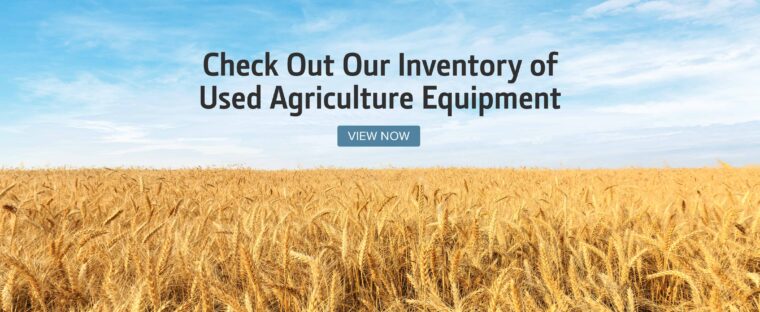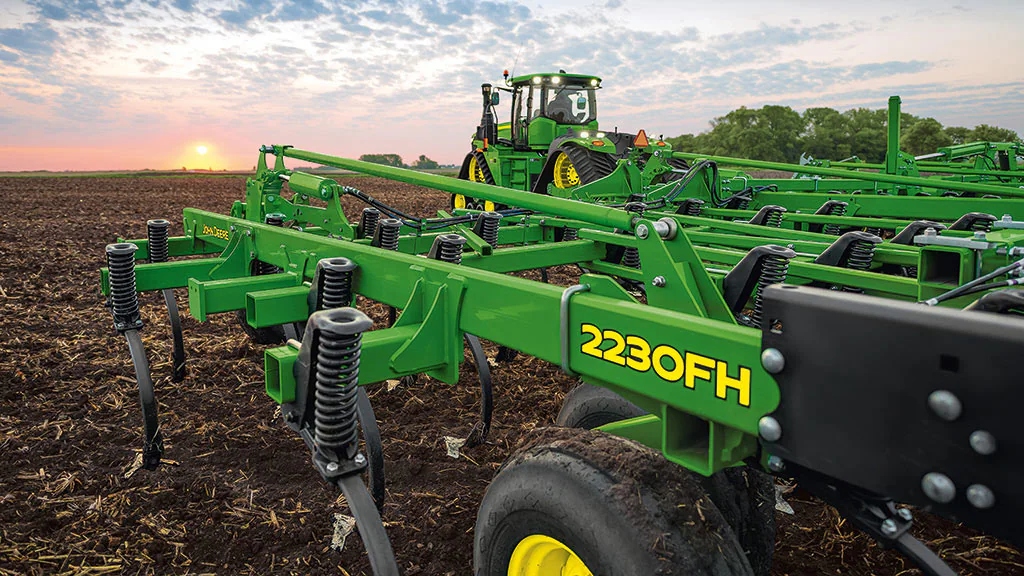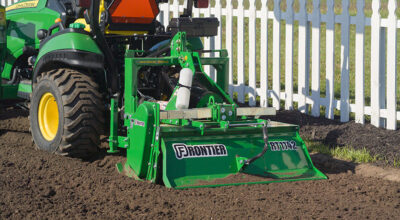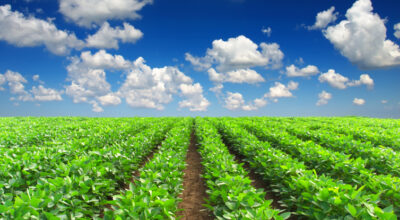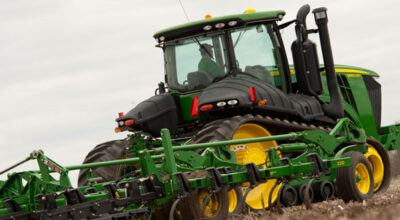The foundation of a strong harvest starts below the surface. By knowing the difference between tilling versus cultivating, you can choose the right soil preparation method that will set your field up for success. While the terms are often used interchangeably, each serves a different purpose in soil management.
In this blog, we’ll break down what makes tilling and cultivating unique, when to use each one, and how John Deere tools can help you get the most out of your soil.
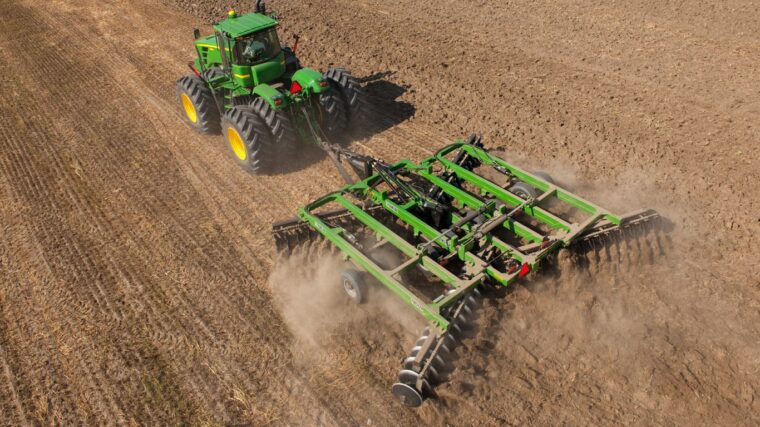
Key Takeaways
- Tilling breaks ground, cultivating maintains it – Tilling resets the soil by turning it over and preparing new seedbeds, while cultivating refreshes the surface to control weeds and improve conditions for established crops.
- Depth is the biggest difference – Tillers dig deep (6–10 inches) for soil preparation, while cultivators work shallow (2–4 inches) to protect roots and maintain soil health.
- Timing matters – Tilling is best before planting or after harvest, whereas cultivating is done during or between growing seasons to keep fields productive.
- Choose based on soil type and crop needs – Clay-heavy soils often benefit from tillage, while sandy or established soils thrive with lighter cultivation. Crop-specific tools like John Deere strip-till or field cultivators optimize results.
- John Deere offers specialized equipment for both – From plows and strip tillers to row crop cultivators, John Deere tools help farmers manage soil health, reduce weeds, and improve yields year-round.
What is Tilling?
Tilling is the process of turning over and loosening soil with heavy-duty tools like plows and tillers. Think of it as hitting the reset button on your field. You’re breaking up the surface, mixing in last season’s residue, and creating a fresh, workable seedbed all at once.
- When should you till? You’ll get the most out of tilling when breaking ground for the first time, preparing a field for spring planting, or resetting a field after harvest.
- How much should you till? Like any farming activity, tilling is most effective in moderation. Too much tillage can leave soil vulnerable to erosion, reduce its ability to hold moisture, and create a hardened layer beneath the surface that makes it harder for roots to push through.
- How deep does tillage go? Tillers typically dig 6–10 inches deep for primary soil preparation, though some tools—like subsoilers—may reach deeper layers. Vertical tillage tools, on the other hand, often work at shallower depths.
- What tools are used for tillage? John Deere offers a range of tillage equipment to make this process more efficient and precise. From mulch tillers to strip-till systems and vertical tillage tools, farmers can find a solution tailored to their heavy-duty soil preparation needs.
What is Cultivating?
Cultivating refreshes the soil after primary tillage, providing upkeep rather than a full reset. While tillers dig deep to turn the soil, cultivators work closer to the surface, skimming just a few inches down to improve conditions without disturbing roots.
This light touch cuts down weeds and keeps the top layer of soil loose and aerated, improving water absorption and nutrient flow.
- When should you cultivate? Cultivation can occur during the growing season for weed control, once crops are established, or after harvest to manage residue, improve soil aeration, and prepare for cover crops.
- What tools are used for cultivating? Field cultivators and row crop cultivators loosen surface soil to optimize conditions both above and below the surface.
Tiller vs. Cultivator: Key Differences
Whether you choose to till or cultivate your soil, each approach relies on different tools. Here’s how tillers and cultivators stack up side by side.
| Feature | Tiller | Cultivator |
| Depth | Varies by method: primary tillage typically 6-10 inches; subsoilers may reach deeper layers; vertical tillage usually works at shallower depths | Varies by method: cultivation generally works 2-4 inches below the surface |
| Timing | Before planting in early spring; sometimes after harvest in fall | During the growing season for weed control, or post-harvest for residue management |
| Purpose | Break new ground, incorporate residue, prepare seedbeds for planting | Control weeds, aerate soil, conserve moisture |
| Ideal for | Heavy clay soils or untouched fields needing a full reset | Sandy or established soils where roots must stay protected |
Choosing the Right Equipment for Your Farm
Choosing between a tiller and a cultivator depends on your soil type, field size, and crop goals.
- Soil type: Clay-heavy soils may benefit from occasional deep tillage to break up compaction, though over-tilling can worsen structure. Sandy soils, meanwhile, often respond better to light cultivation that preserves soil integrity.
- Field size: For large-scale operations, multi-row cultivators or specialized tillage attachments help cover acres quickly. Smaller plots, however, may do better with compact cultivators that are built for maneuverability.
- Crop type: Strip-till solutions like the John Deere ST12 are ideal for row crops such as corn and soybeans, as narrow seedbeds are vital for strong early growth. A John Deere PC10 Field Cultivator, on the other hand, works well for mid-sized farms that need flexibility across mixed plantings.
Whatever tool you choose, proper maintenance makes all the difference. Blades should stay sharp for clean cuts, worn parts should be replaced, and equipment stored in a dry, protected space. These simple steps extend tool life and ensure reliable performance season after season.
Ready to Find the Right Tool for Your Soil?
From deep resets that prepare fields for spring planting to surface-level passes that protect crops mid-season, the right equipment shapes how your soil performs year-round. Tillers and cultivators each play a distinct role, working together to keep farms productive and fields healthy.
Ready to get more from your soil? Visit your local John Deere dealer or browse online to explore new and used tillers and cultivators.
